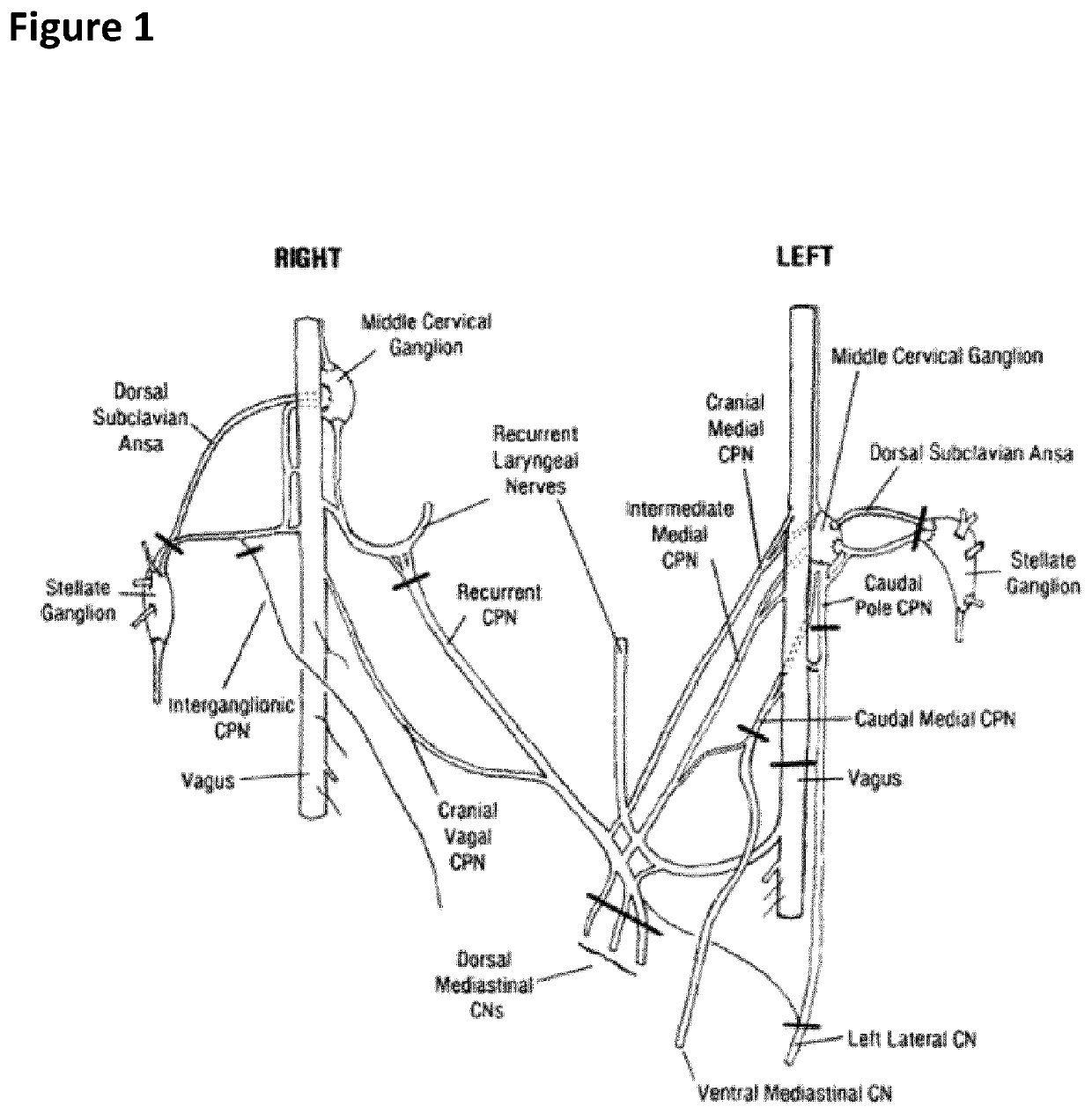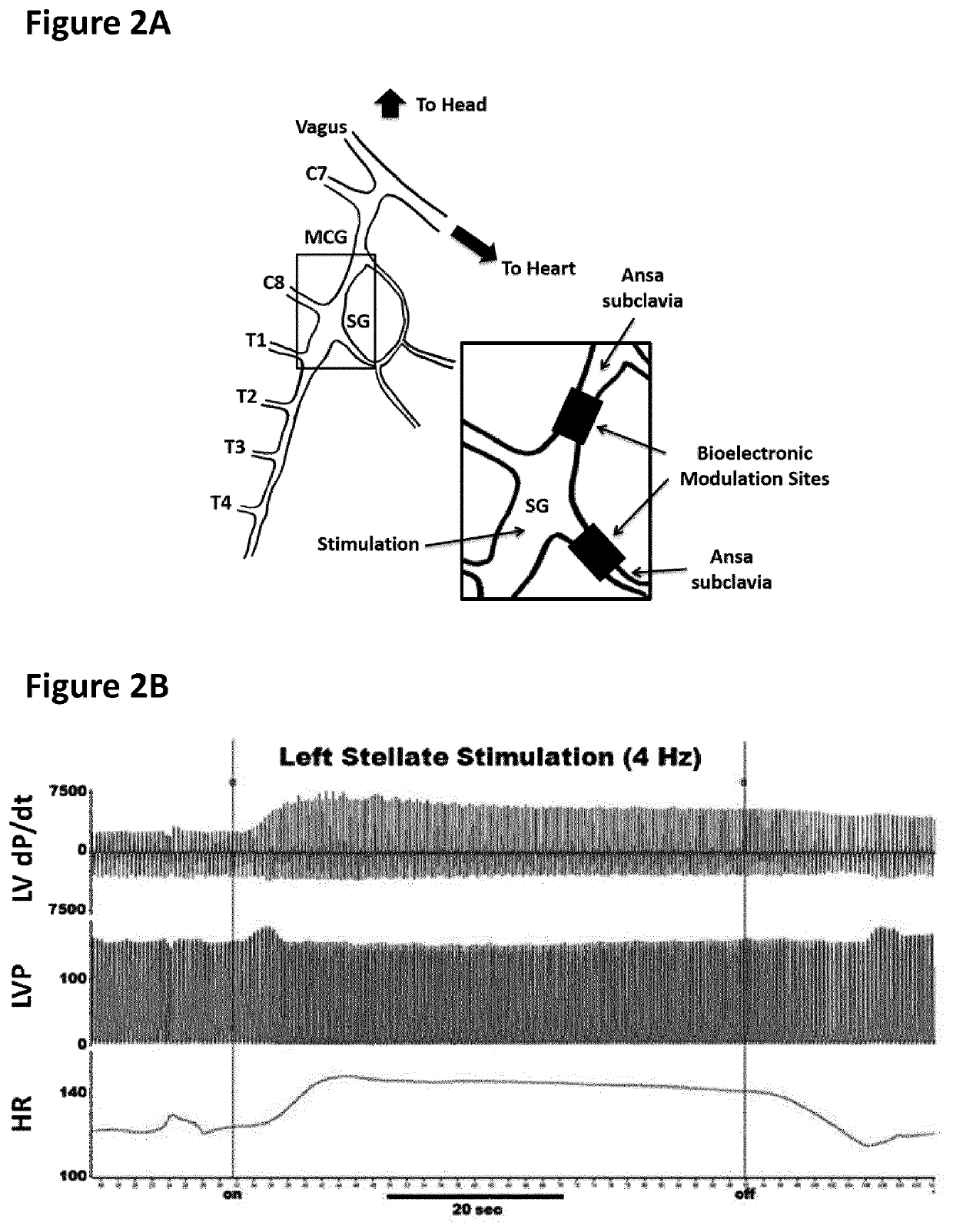Treatment of cardiac dysfunction
a treatment method and cardiac dysfunction technology, applied in the field of cardiac dysfunction treatment, can solve the problems of reducing the parasympathetic drive affecting the function of the myocardium, etc., and achieve the effect of prolonging the
- Summary
- Abstract
- Description
- Claims
- Application Information
AI Technical Summary
Benefits of technology
Problems solved by technology
Method used
Image
Examples
example 1
ELECTRODE EXAMPLE 1
Devices Configured to Deliver KHFAC
[0143]An electrode formed of silver wires is provided and connected to an AC signal generator on the implantable device. Although silver wire is used here, any suitable electrode may be used, as described above. In this case, the electrode comprises at least one anode and at least one cathode formed of silver wires. The AC signal provided by the signal generator is in this case (though need not be) a biphasic square wave, wherein the signal delivered to the at least one anode is 180° out of phase with the signal delivered to the cathode. Alternatively, the AC signal provided by the signal generator is a biphasic sawtooth wave, such as in [39]. The AC signal provided by the signal generator may alternatively be a sine wave.
[0144]In one example, the selected frequency of an AC signal provided by the AC signal generator and effective for producing a KHFAC block to the ansae subclavia (see FIG. 2C and associated description elsewhere...
example 2
ELECTRODE EXAMPLE 2
Devices Configured to Deliver Charged Balanced DC Carousel
[0146]A 4-node charge balanced DC ‘carousel’ electrode (i.e. a carousel electrode with four electrode contacts) is shown in FIG. 10, the electrode being made from platinum and coated with carbon black. A DC source, provided on the implantable device, is electrically connected to each electrode contacts of the 4-node electrode.
[0147]The electrode nodes are spatially separated from each other but aligned along a common axis which, when implanted, is parallel with the axis of the nerve fibers. In this iteration, the electrode has the following dimensions ˜1 cm×1 cm, each node being 1.8 mm and separated from next node by 1 mm. Each node of the electrode has the same dimension measured along the axis, and preferably also has the same dimension perpendicular to the axis. The nodes are evenly spaced on the electrode. Electrode dimensions are scalable and in other iterations, dimensions can be increased or decrease...
PUM
 Login to View More
Login to View More Abstract
Description
Claims
Application Information
 Login to View More
Login to View More - R&D
- Intellectual Property
- Life Sciences
- Materials
- Tech Scout
- Unparalleled Data Quality
- Higher Quality Content
- 60% Fewer Hallucinations
Browse by: Latest US Patents, China's latest patents, Technical Efficacy Thesaurus, Application Domain, Technology Topic, Popular Technical Reports.
© 2025 PatSnap. All rights reserved.Legal|Privacy policy|Modern Slavery Act Transparency Statement|Sitemap|About US| Contact US: help@patsnap.com



